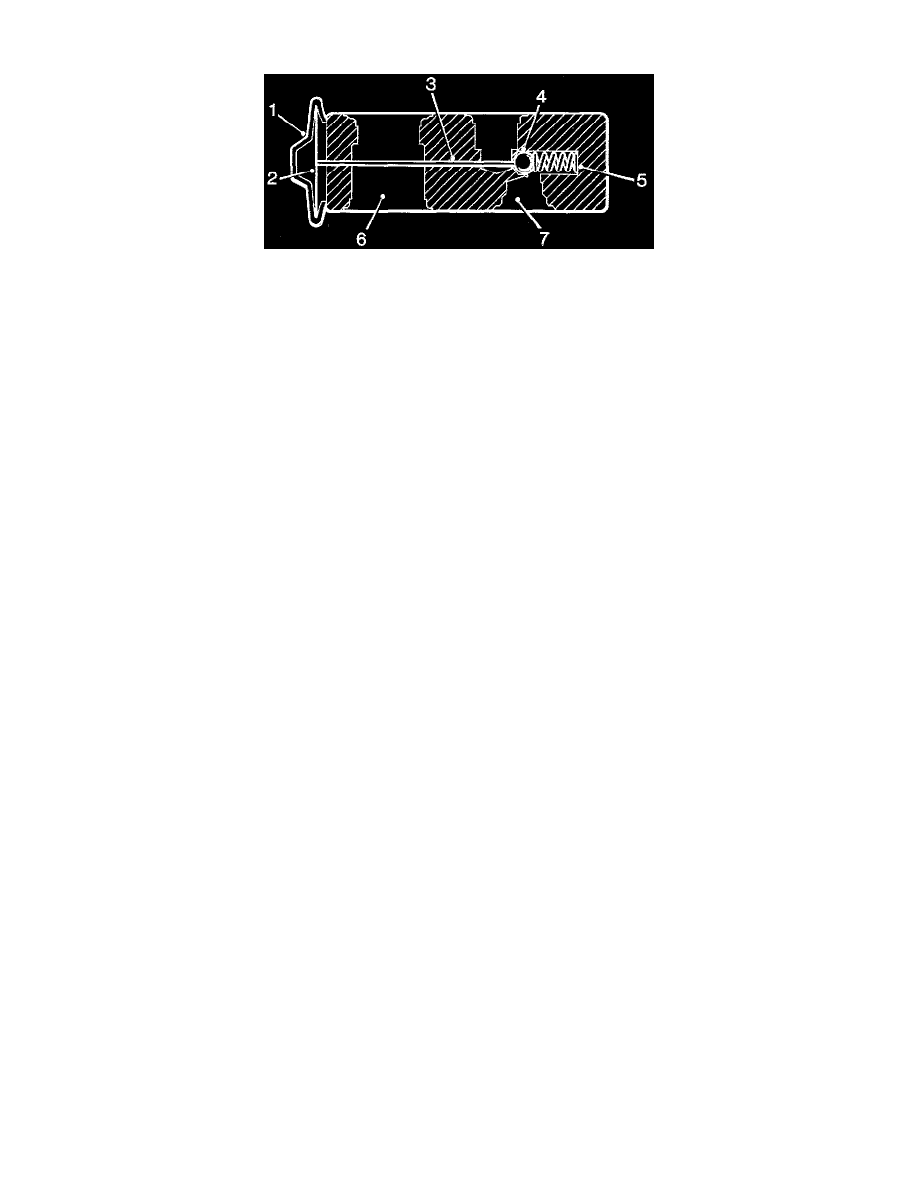900 S Sedan V6-2498cc 2.5L DOHC (1995)

Expansion Valve: Description and Operation
Components
1 - Gas-filled chamber
2 - Diaphragm
3 - Pressure lever
4 - Ball
5 - Spring
6 - Low-pressure side
7 - High-pressure side
Technical Description
The expansion valve regulates the amount of refrigerant entering the evaporator.
The expansion valve consists of a spring-loaded ball, which is located on the high-pressure side. The ball is connected via a pressure lever to a
diaphragm in a gas-filled chamber on the expansion valve's low-pressure side. The spring presses on the ball with a constant load. The pressure
lever's pressure on the ball depends on the pressure in the gas-filled chamber. The pressure in the gas-filled chamber depends on the temperature of
the refrigerant in the evaporator's outlet.
If the temperature of the refrigerant which passes the expansion valve's low-pressure side drops, the pressure in the gas-filled chamber will also
drop. The spring then presses on the ball and the pressure lever, the diaphragm cannot withstand the pressure and the expansion valve closes.
If the temperature of the refrigerant increases, the pressure in the gas-filled chamber increases as well. The diaphragm then presses on the pressure
lever and the ball, the spring is compressed and the expansion valve opens.
Mode Of Operation
The refrigerant which enters the expansion valve is in liquid form under high pressure and at high temperature. The task of the expansion valve is
to adjust the amount of refrigerant which is sprayed into the evaporator. The valve does not allow in more refrigerant than can be evaporated at
any one time.
